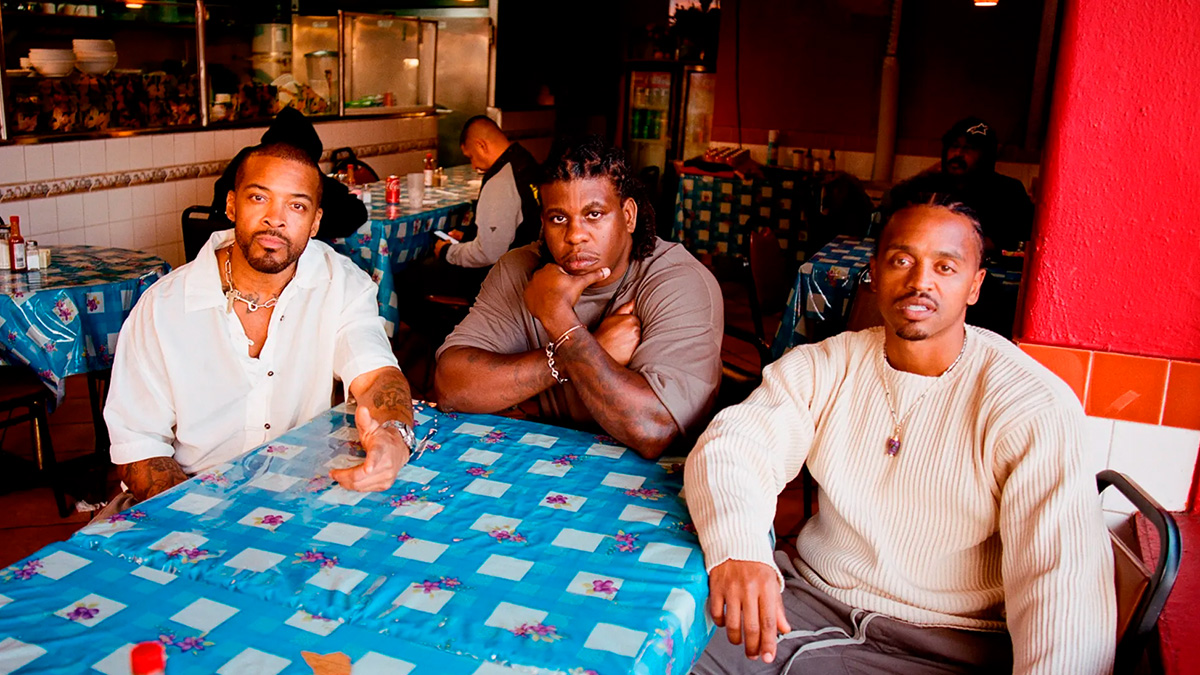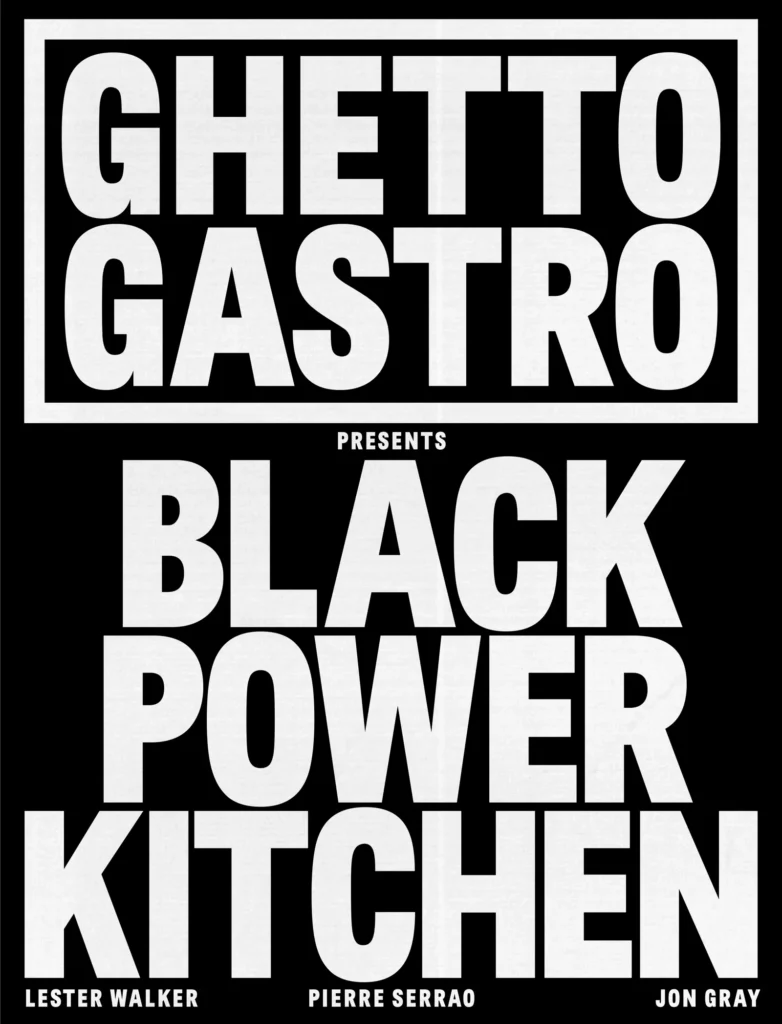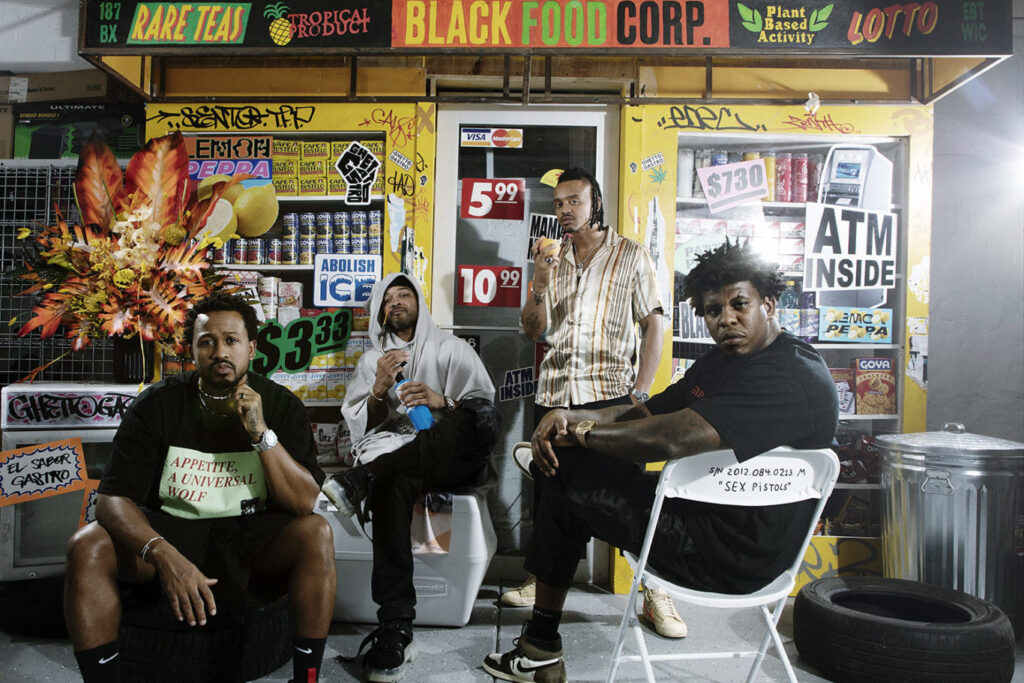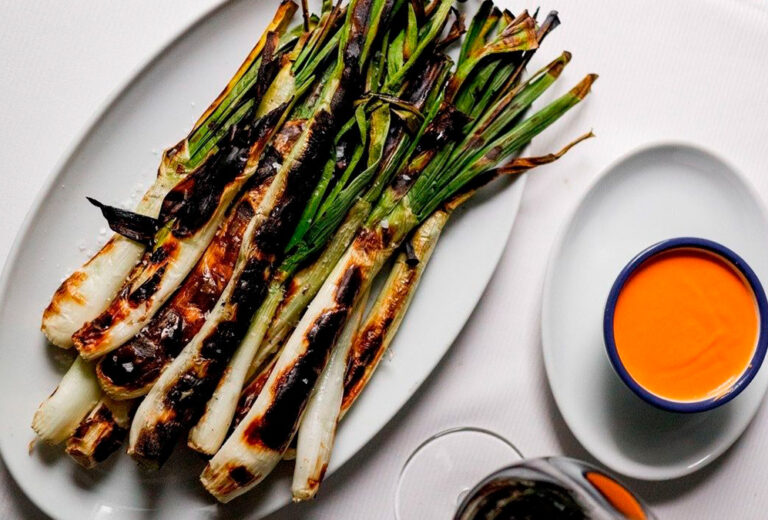Click here to read the Spanish version.
Based on an imaginary of ideas with which to nurture freedom and a collective movement of racial struggle shaped by chefs Jon Gray, Pierre Serrao and Lester Walker, this gastronomic ghetto has reinvented the cultural scene through the nexus of food, fashion, political activism and community engagement.
The founding of Ghetto Gastro as a political act in a gastro key had its roots in the Bronx in 2012. The trio then began cooking up their identity and expanding their community through hosting clandestine dinner parties in their apartments. Supper clubs in the form of activism that gradually spread by fusing chef-created food with hip hop culture and performances by New York’s best DJs.
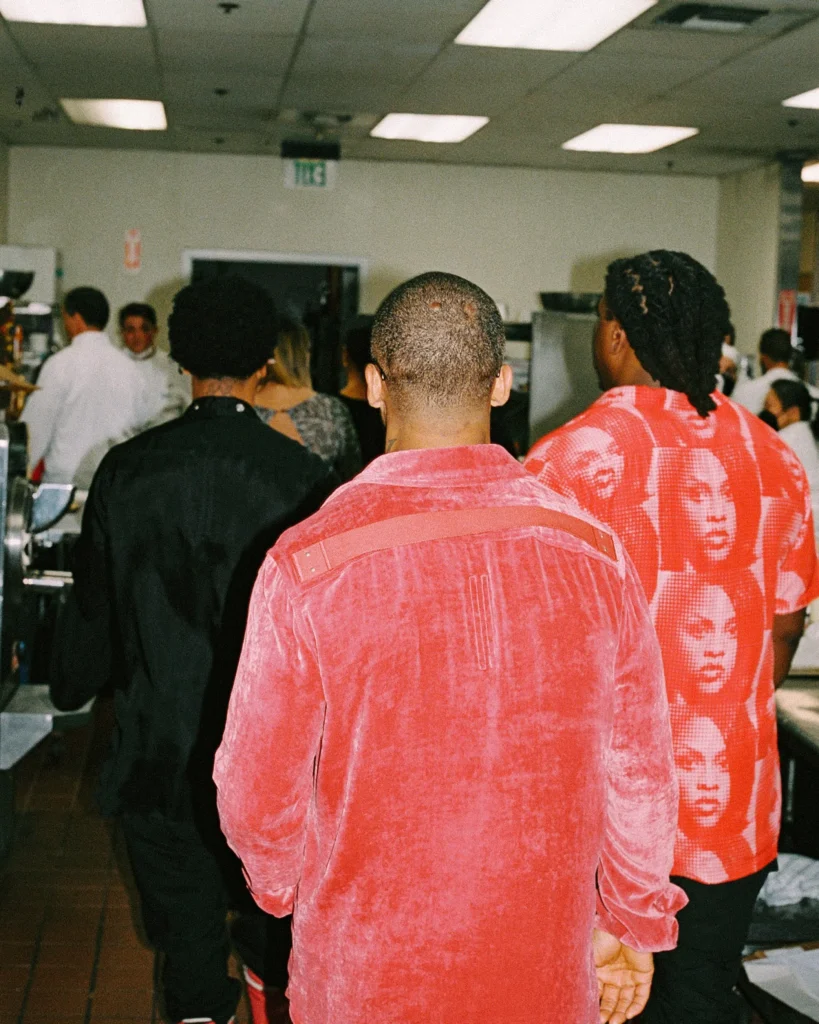
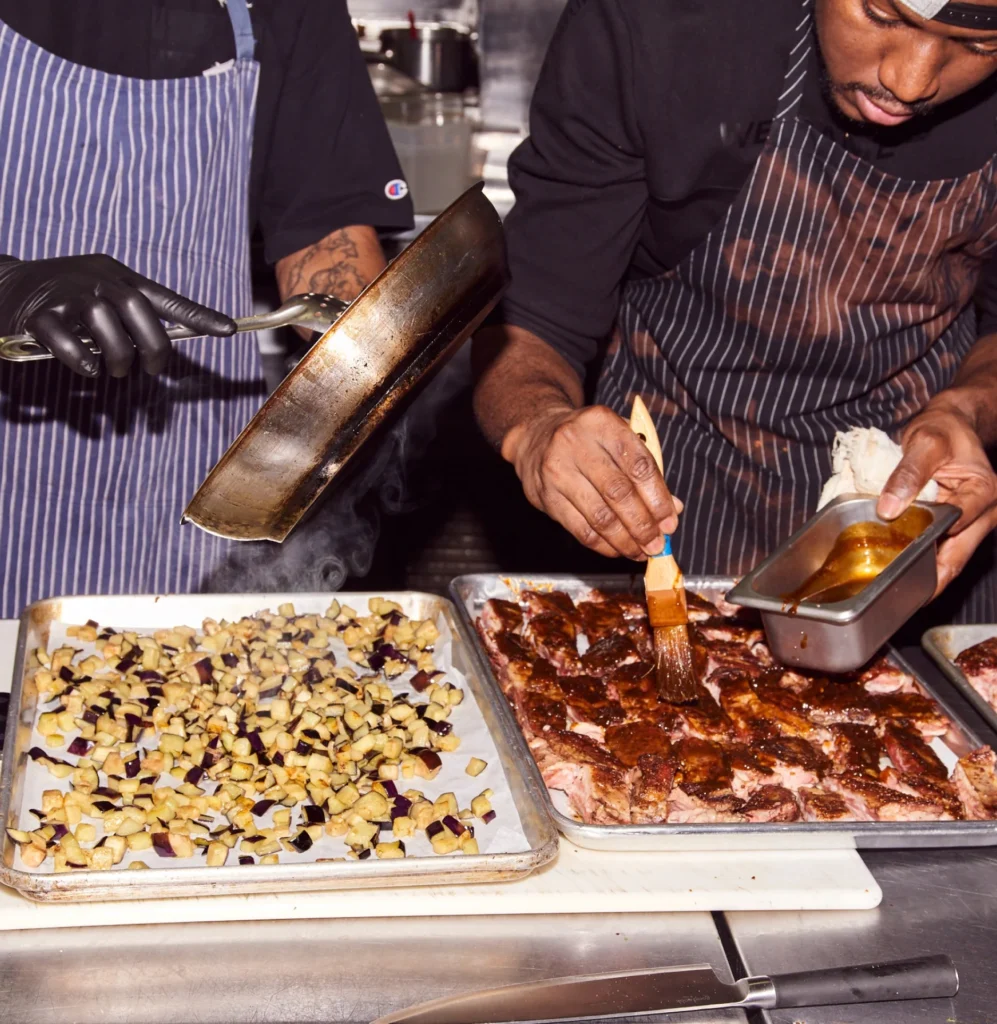
Since then, the New York collective has empowered black communities through a cultural movement of culinary creations with different backgrounds and meanings, such as a deconstructed apple pie that addresses the Black Lives Matter theme -titled ‘Black Bodies’- as well as other creative or aesthetic expressions translated into clothing. In this sense, they are totally immersed in the fashion system through their constant collaborations and/or actions such as designing caterings for firms like Rick Owens and muse Michèle Lamy.
Beyond fashion, the collective has organized events for countless brands around the world, from Cartier to Nike, Timberland to Apple, and even created menus directly inspired by works such as Basquiat’s and/or other contemporary artists. That is, as long as they are in sync with the values of this artistic movement designed to inspire others and elevate historically undervalued groups.
‘BLACK POWER KITCHEN’
Food then becomes a weapon for this collective that aims to enhance the cultural heritage behind some of the most cherished dishes of the black diaspora. A gastronomic religion that they have even immortalized in their own cookbook entitled ‘Black Power Kitchen‘, which serves as both a cooking manual and a manifesto of their mission and narratives: to consider food as a form of survival and a source of luxury at the same time.
In the book we can also find recipes such as salted fish takoyaki interspersed with poems, paintings and interviews -such as with rapper A$AP Ferg- essays on social exclusion and the tensions between Chinese American restaurants and their black customers, as well as portraits of the street ice cream makers and counter workers who form the basis of the Bronx food economy.
FOOD AS A POLITICAL ACT
During this decade of existence, in which they began in a clandestine and abstract way, they have been making themselves known globally, especially since their incursion into the world of fashion and art, and the planning of events and caterings. Creative actions with which they have managed to grow in wider spheres, and even create kitchen utensils such as air fryers or a line of CruxGG with products such as waffle makers, syrup mixes and waffles.

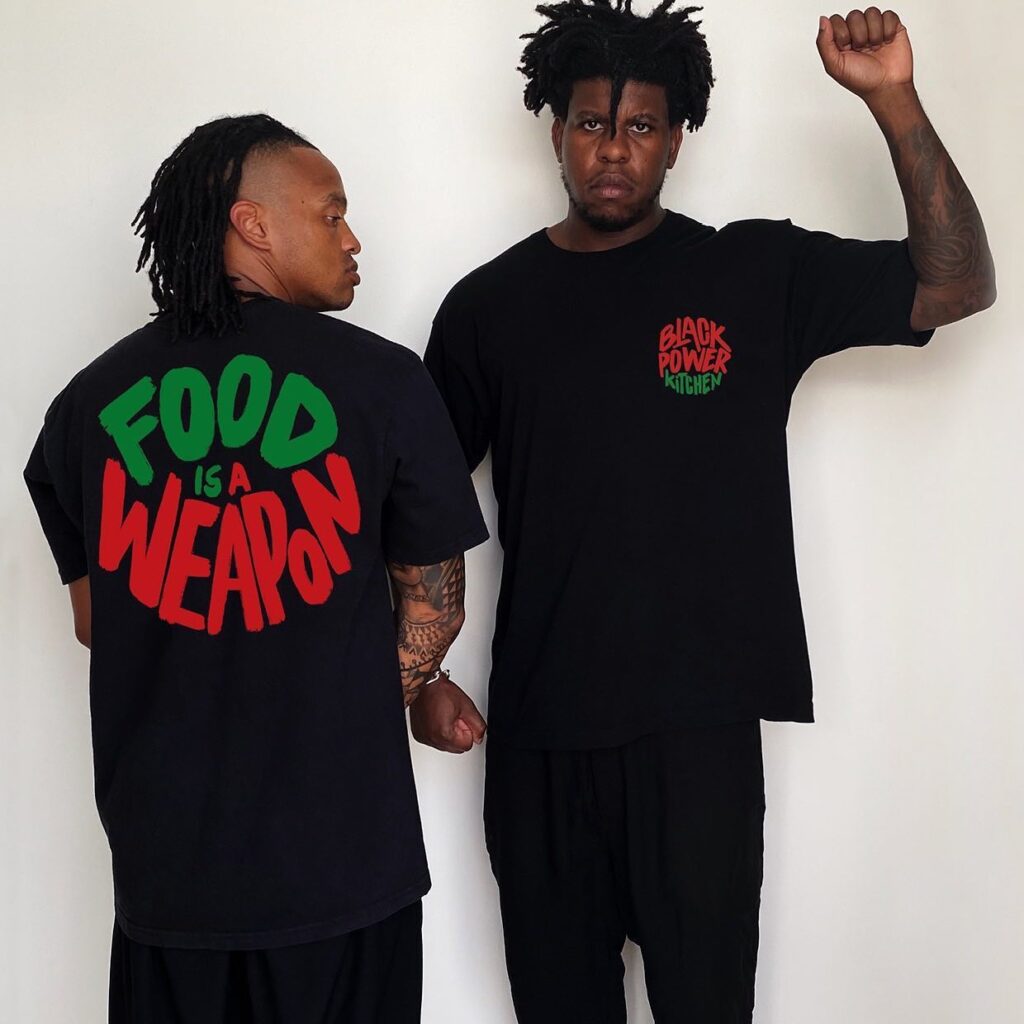
In the display where Ghetto illustrates food as a tool to tell stories and culinary traditions of the black community, we can find highlights such as spicy maple syrup for pancakes that tells the story of the struggle for racial justice. For, according to the collective, abolitionists turned to maple as a sweetener to boycott the sugar plantations that enslaved so many people. They learned to extract maple from indigenous communities that had been doing so for centuries. The maple represents the fight against slavery.
The depth that food takes on here is also represented in other pancake and waffle mixes, as well as toaster pastries or healthier versions of Pop Tarts with flavors like maple, apple, cinnamon and raspberry chocolate.
Ghetto Gastro‘s expansion now continues to influence universal gastronomy by the hand of its powerful narrative: feeding the world based on cultural collision and the amplification of the art, creativity and brilliance of the Global South’s food culture.

